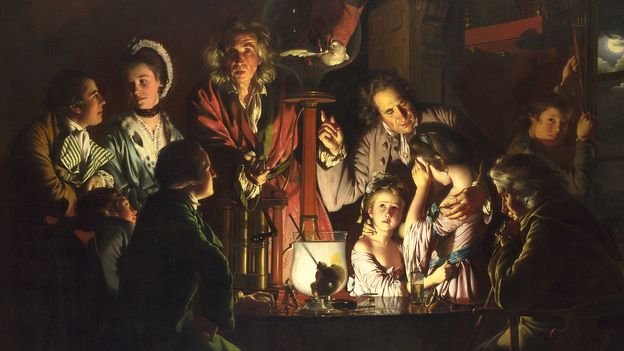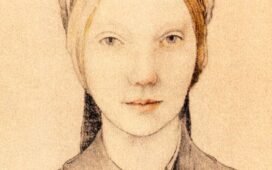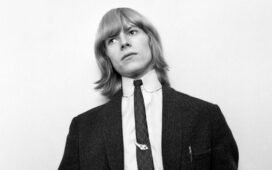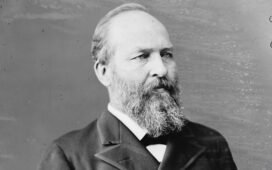
And while air pumps had been devised way back in 1650, the spirit of sharing scientific truths democratically was modern. “The dissemination of knowledge,” Riding tells the BBC, “was a new thing to the 18th Century.”
Depictions of modern life
And this brings us to the second ingredient of modern art – the representation of modernisations in society. Normally, this breakthrough is credited to pioneering artists in the 1800s such as JMW Turner.
Christine Riding believes that Wright’s innovation in this area was inspired by changing exhibition opportunities for artists in Britain at the time. Before the creation of a Royal Academy, artists had the choice of several competing display venues. One of them was the Society of Artists of Great Britain, where An Experiment on a Bird in the Air Pump was first displayed to the public. “The Society of Artists encouraged arts, science, and manufacture,” Riding says. “This was a world that didn’t tend to separate art and science, they tended to be seen as one and the same thing.”
Wright decisively exploited this new art scene and its encouragement of cross-disciplinary thinking. It inspired him to make science the subject of art. This also mirrored wider changes occurring in 18th-Century society, such as the Industrial Revolution, which was just beginning to gear into action in Great Britain, and whose epicentre was the Midlands, Wright’s place of birth. And Wright was clever enough to recognise the spirit of modernisation and record it for posterity.
He even knew some of the preeminent figures of this momentous era, including members of the Lunar Society of Birmingham, which met to discuss scientific and industrial innovation, and Richard Arkwright, the foremost entrepreneur of the Industrial Revolution.








Recent Comments